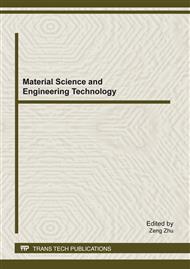p.580
p.587
p.592
p.598
p.603
p.609
p.619
p.624
p.631
The Research of Binocular Ranging System on Independent Mobile Robot
Abstract:
Timeliness and accuracy is a key to be resolved on robot binocular measurement. In this paper, a kind of robot vision projection has been completely established. It analyzes the principle of binocular ranging in three aspects, makes the calculation concise and easy to understand, and expands the range of effective distance. On binocular image processing, we have proposed a gray-scale computing for, firstly, generating characteristic area, then, executing template matching in the area, finally, extracting feature points and matching them in the templates. It ensures certain robustness to noise spots and tries its best to avoid mismatches. The experiments show that the robot vision system has a better accuracy and a low time complexity, and the robot can react in real time.
Info:
Periodical:
Pages:
603-608
Citation:
Online since:
February 2012
Authors:
Price:
Сopyright:
© 2012 Trans Tech Publications Ltd. All Rights Reserved
Share:
Citation:


